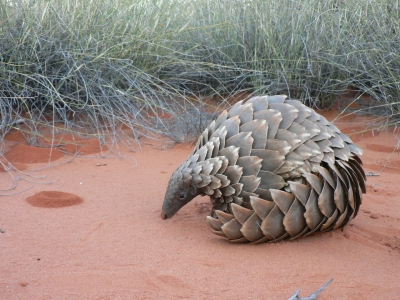
The shy, harmless pangolin is becoming increasingly well known for one reason: It’s believed to be the world’s most trafficked non-human mammal. Tens of thousands of pangolins are poached every year, killed for their scales for use in traditional Chinese medicine and for their meat, a delicacy among some ultra-wealthy in China and Vietnam.
Pangolins are solitary and active mostly at night. Most live on the ground, but some, like the black-bellied pangolin, also climb trees.
They range in size from a large housecat to more than four feet long. They are largely covered in scales made of keratin—the same material as human fingernails—which gives them the nickname “scaly anteater.” When threatened, they roll into ball, like an armadillo, and they can release a stinky fluid from a gland at the base of their tails as a defense mechanism.
Like anteaters, pangolins have long snouts and even longer tongues, which they use to lap up ants and termites they excavate from mounds with their powerful front claws. They’re able to close their noses and ears to keep ants out when they’re eating.
Though they look and act a lot like anteaters and armadillos, pangolins are more closely related to bears, cats, and dogs.
Credit : National Geographic
Picture Credit : Google




